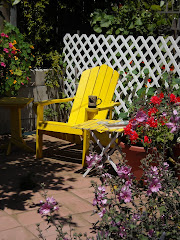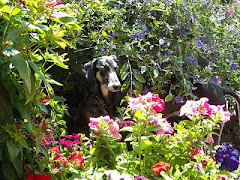
The following excerpt is from Lyanda Lynn Haupt’s new book, “Crow Planet; Essential Wisdom from the Urban Wilderness,” a splendid book now available at your local bookstore.
“So you’re saying crows are the birds we deserve,” friends have suggested as if crows – bulky and black, stalking about – might be present as a punitive reminder of our ecological missteps. It might sound as if that’s what I’m saying. Certainly it is ironic, at best, that we remove forests, replace them with concrete and shrubbery, line the sidewalks with plastic cans full of food scraps and topped with ill-fitting lids and then lament the presence and noise of so many crows. But no, if it were about deserving, we would have no bird at all. As it is, we have a shiny, black, intelligent, native, wild bird we’ve been given.
“It is difficult to know just how many crows there are. The international avian conservation organization Partners in Flight estimates the American Crow population in the United States to be about thirty-one million, but some crow experts, including John Marzluff at the University of Washington, believe that number to be a bit low. There are more than three hundred million people in the United States. Marzluff tells me that while he doesn’t know for certain, he thinks there might be about one crow for every five to ten humans. This would be consistent with his studies showing that nesting pairs in suburban areas tend to claim and defend two houses with their accompanying yards as breeding territory. There is, then, roughly one crow per family. I like to think about this when I set the table for dinner; I imagine a dark visitor, our allotted crow, perching on the back of a chair with one of our best china plates in front of it, waiting for the spaghetti.”












1 comment:
Corvids evolved from dinosaurs, their basic equipment and the behaviors that come with it predate the folly of men.
Intelligence? a side affect. It doesn't exist on its own.
An appendage that can manipulate and test the environment (beak), associated with vision, grasping appendages based on a five digit plan that predates the split between the pre-mammalian common ancestors. Earlier than that, a symmetric axis body plan and a bump, a node, a place where inputs from bouncing photons, could be differentiated from the senses that detect nourishment directly.
All those are necessary for those organisms who are more likely to come TO dinner rather than BE dinner.
Being in a class that is in the top of the food chain, confers some responsibility; that of not over breeding beyond the food source. Territoriality; that is set of behaviors that is in part genetic, in part learned,
in part selected by the principal food source distribution and in part preexisted in single celled organisms. It is also embedded in the self reinvention of DNA; the re-shuffling of the deck of DNA Cards, that in turn gives rise to the set of behaviors of Sexual selection.
The sexual selection territoriality of a breeding pair (and in some cases-colonies of nesting birds, as well as their inheritance of a modified environment.) may include other inputs and inherited behaviors that may not apply to the behavior of solitary individuals.
Crows know that they are magic, portend magic, tell magical tales to each other.
They tell of practical things too, "look- a large amount of tangled long sticky still white worms, on a round rock
in the cave where the multi colored two legs is kept by the small barking four legs, more then we can eat, Caarw, shall we share or shall we hide it? Caw."
(mixing Ann's house in Los Osos with the house of Lyanda Lynn Haupt’s in her new book)
They have a word in their language for "DANGER",
They have a word in their language for "NEW",
But they do not have a word in their language for "Natural"
To a crow everything in the world is natural.
"Natural versus unnatural"- That is a recent human conceit.
And the point is this- trusting a ballpark guess by a crow expert is one thing, but territoriality is a complex behavior.
Crows adapt easily, due in part to intelligence, learning and teaching.
Suburban crow living adaptations do not reflect wild habitat density adaptations. Food abundance allows for closer living, and population density responsive behaviors and genes change, and whats true for the birds is true for the bees, and the locust swarms
In a famous experiment fruit flies were bred and selected or speed of flight. The first flys
emerging from a contraption designed to "Select" for fast flies were bred over many generations of "first emergers"
until a race of "speedies" was established, that were in fact faster to emerge.
Later it was found out that what behavior (genes) was selected for, was in fact a "claustrophobia" gene,
with the emergence dependant on the degree of "comfort" that the flies had for staying in the contraption.
It is entirely possible that there are learning and food source issues, that prevent extrapolations from one environment to another.
Over additional time, Town birds can indeed evolve to speciate
(isolate from the "wild population" to the point that additional breeding may not occur).
May you always be blessed with an abundance of Crows, Ann, and may they continue to allot themselves as they see fit.
Before we move on to our just desserts
Let me lay this (Michel) Rose on your plates.
Before we move on.
(magpies!)
Post a Comment